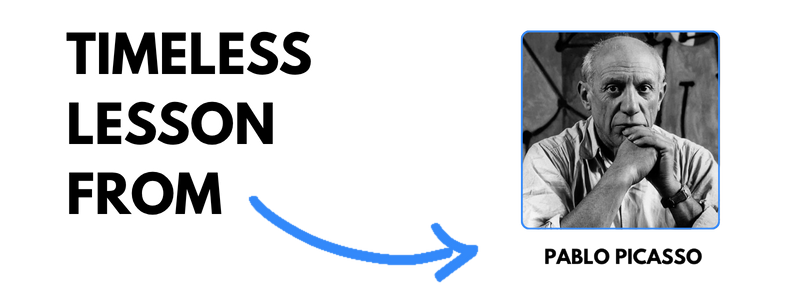Pablo Picasso: The Artist Who Saw Differently
By the age of 13, his skill surpassed his father’s, setting him on a path to redefine what art could be.
Pablo Ruiz Picasso was born on 25 October 1881 in Málaga, Spain. His father was an art teacher, and from the time Pablo could hold a pencil, he showed extraordinary talent. By the age of 13, his skill surpassed his father’s, setting him on a path to redefine what art could be.
Before we continue, a quick word from today’s sponsor:
Meet the debit card that does more with your money
Cash App Card is a debit card that turns everyday spending into everyday savings. From your grocery list to new sneakers, you’ll get offers that unlock instant discounts at places you already shop—in person and online.
It’s not just about saving. Cash App Card is designed for peace of mind, with 24/7 fraud monitoring and no monthly or hidden fees. Plus, you can pay over time for eligible purchases and split them into 4 interest‑free payments with Cash App Afterpay.*
It’s more than a debit card. It’s a smarter way to spend and take control of your cash every day.
Disclaimer: Cash App is a financial services platform, not a bank. Banking services provided by Cash App’s bank partner(s). Prepaid debit cards issued by Sutton Bank, Member FDIC. See Terms and Conditions. Offers, discounts and savings provided by Cash App, a Block, Inc. brand. *All states except Alabama and Texas: Afterpay is offered and managed through your Cash App account - no Afterpay account needed. Loans issued by First Electronic Bank. Alabama and Texas: Afterpay is offered and managed through your Cash App account - no Afterpay account needed. Loans issued by Square Capital, LLC.
Picasso studied at art schools in Barcelona and Madrid but often clashed with formal instruction. He preferred experimenting, sketching endlessly, and exploring the streets for inspiration. Restless and ambitious, he moved to Paris in 1904, immersing himself in the city’s vibrant art scene.
His early works reflected his struggles — the Blue Period (1901–1904) captured themes of poverty and despair, followed by the Rose Period (1904–1906), marked by warmer tones and circus imagery. But his true breakthrough came in 1907 with Les Demoiselles d’Avignon, a radical departure from realism that helped spark Cubism. Alongside Georges Braque, Picasso deconstructed perspective, presenting multiple viewpoints at once — a revolution in how the world saw art.
Over his lifetime, Picasso produced more than 20,000 works: paintings, sculptures, ceramics, and drawings. His styles shifted constantly, from classical realism to surrealism, refusing to be confined to one movement. During the Spanish Civil War, his painting Guernica became a global symbol of anti-war protest.
Wealth and fame followed, but Picasso never stopped experimenting. He worked obsessively until his death in 1973, leaving behind a legacy as one of the most influential artists in history.
Dare to Break the Frame
Picasso’s genius wasn’t just his skill — it was his refusal to stay inside the lines. When others painted what they saw, he painted what he imagined, even when critics dismissed it as ugly or incomprehensible. His courage to break rules created entirely new ways of seeing.
The lesson isn’t about painting — it’s about perspective. If you want to create something lasting, don’t just repeat what works. Question the frame, bend it, and if necessary, shatter it.
Innovation begins when you stop asking “How do I fit in?” and start asking “What if I don’t?”
Until next time,
The Chronicler





